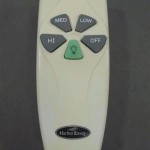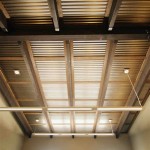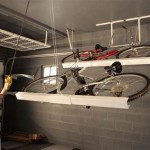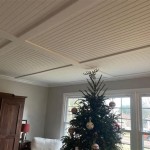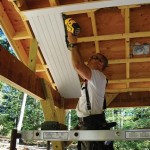Common Ceiling Fan Problems in English Homestays
Ceiling fans are a common fixture in many English homestays, providing a cost-effective method for circulating air and improving comfort. However, like any mechanical device, they are prone to various issues that can affect their performance and lifespan. Understanding these common problems and their potential solutions is crucial for homestay hosts to maintain a comfortable and welcoming environment for their guests.
This article will explore several frequently encountered ceiling fan problems in English homestays, offering an informative guide for identifying and addressing these issues. By proactively managing ceiling fan maintenance, homestay hosts can ensure optimal functionality and prevent further damage, ultimately enhancing the overall guest experience.
Wobbling and Unbalanced Operation
One of the most prevalent issues with ceiling fans is wobbling. This instability during operation can be distracting and, in some cases, potentially dangerous if left unattended. The primary cause of wobbling is an imbalance in the fan blades. This imbalance can arise from several factors, including variations in blade weight, loose screws, or blade misalignment.
Blade weight discrepancies, albeit often minute, can significantly impact balance. Even subtle differences in the density or thickness of the blades can create an uneven distribution of weight, leading to wobbling. Over time, dust accumulation on one or more blades can also contribute to this problem. Regular cleaning of the fan blades is, therefore, essential for maintaining proper balance.
Loose screws are another common culprit. The screws that attach the blades to the blade holders, as well as those securing the blade holders to the motor housing, can loosen over time due to vibration. Regularly checking and tightening these screws can often resolve minor wobbling issues. A small screwdriver is typically all that's required for this task.
Blade misalignment can occur due to accidental bumps or improper initial installation. If the blades are not aligned horizontally, the fan will wobble. The distance from the blade tip to the ceiling should be consistent for all blades. This can be measured using a tape measure. If discrepancies are found, gently adjust the blade holders to ensure uniformity. In some cases, a balancing kit, which typically consists of small weights attached to the blades, may be necessary to correct significant imbalances. These kits are readily available at most hardware stores.
Before attempting any repairs, ensure the fan is switched off and the power supply is disconnected to prevent electrical shock. If the wobbling persists after addressing these common causes, it may indicate a more serious problem, such as a damaged motor or a bent blade holder, requiring professional attention.
Dim or Non-Functional Lighting
Many ceiling fans incorporate integrated lighting fixtures, which can also experience problems. Dim or non-functional lighting is a common complaint, often stemming from issues with the light bulbs, wiring connections, or the light kit itself.
The most straightforward solution is to check the light bulbs. Ensure they are properly screwed in and are of the correct wattage for the fixture. Replacing burned-out bulbs with new ones is often the quickest and easiest fix. Consider using LED bulbs, which are more energy-efficient and have a longer lifespan than traditional incandescent bulbs. If the problem persists after replacing the bulbs, the issue may lie elsewhere.
Loose wiring connections can also cause lighting problems. The wiring connections within the light kit, as well as those connecting the light kit to the fan’s motor housing, can loosen over time due to vibration. Carefully inspect these connections, ensuring they are secure and properly insulated. If any loose wires are found, tighten them using appropriate wire connectors. Always disconnect the power supply before working on electrical connections.
In some cases, the light kit itself may be faulty. The light kit may contain a ballast or transformer that has failed. If the light kit is suspected of being faulty, it may need to be replaced entirely. Replacement light kits are available for most ceiling fan models. Consult the fan’s manual or contact the manufacturer for compatible replacement options. Additionally, damaged or corroded sockets can sometimes cause lighting problems with fan lights. Repairing or replacing the socket may be necessary.
If the lighting issue is complex or if there is any uncertainty about electrical safety, it is advisable to consult a qualified electrician. Attempting to repair electrical issues without proper knowledge and experience can be dangerous and potentially lead to serious injury.
Noisy Operation
A noisy ceiling fan can be disruptive and uncomfortable, especially in a homestay environment where quiet and relaxation are valued. Noise can originate from various sources within the fan, including the motor, blades, or mounting hardware.
Motor noise is often indicative of lubrication issues or internal wear. Over time, the motor's bearings can dry out, leading to friction and noise. Applying a small amount of lubricating oil to the motor bearings can often resolve this issue. Consult the fan's manual for specific instructions on lubrication. If the motor noise persists after lubrication, it may indicate more serious internal damage, potentially requiring professional repair or replacement of the motor.
Blade noise can arise from several factors, including loose screws, unbalanced blades, or contact with other objects. Check that all screws attaching the blades to the blade holders and the blade holders to the motor housing are securely tightened. Ensure that the blades are properly balanced and aligned, as described in the section on wobbling. Also, check for any obstructions that the blades may be hitting, such as light fixtures or decorative elements.
Mounting hardware noise can occur if the fan is not securely mounted to the ceiling joist. The fan’s mounting bracket should be firmly attached to a reinforced ceiling joist to prevent vibration and noise. Check that the mounting screws are properly tightened and that the bracket is securely fastened. If necessary, add shims or adjust the mounting bracket to eliminate any play or movement. A loose or improperly installed downrod can also amplify noise by causing vibrations throughout the fan assembly.
Sometimes, the noise can stem from the speed control switch. If the switch is old or faulty, it can create a buzzing or humming sound, especially at lower speeds. Replacing the speed control switch may resolve this issue. As with all electrical repairs, ensure the power supply is disconnected before working on the switch.
Pinpointing the exact source of the noise can be challenging, but carefully observing the fan during operation and systematically checking each potential cause can help identify the problem. Addressing the source of the noise promptly will ensure a more comfortable and peaceful environment for guests in the homestay.
Slow or Inconsistent Airflow
A ceiling fan's primary function is to circulate air and provide cooling relief. If the fan is operating at a reduced speed or providing inconsistent airflow, it may not be effectively performing its intended purpose. Several factors can contribute to this issue, including motor problems, incorrect rotation direction, and dust accumulation.
Motor problems can directly affect the fan's ability to generate sufficient airflow. A weak or failing motor may not be able to turn the blades at the appropriate speed. Check the fan's motor for signs of overheating or unusual noises. If the motor appears to be struggling, it may need to be professionally repaired or replaced. Capacitors in the fan also sometimes go bad, causing this issue. Replacement capacitors are fairly inexpensive and widely available.
Incorrect rotation direction can also impact airflow. In most ceiling fans, the blades should rotate counterclockwise during the summer to create a downdraft that cools the room. In the winter, the blades should rotate clockwise at a low speed to draw warm air from the ceiling down into the room. Check the fan's direction switch and ensure it is set to the appropriate direction for the current season. Many people are unaware of this seasonal setting, leading to ineffective airflow.
Dust accumulation on the blades can significantly reduce airflow efficiency. Dust buildup increases the weight of the blades and disrupts their aerodynamic properties, hindering their ability to move air effectively. Regularly cleaning the blades with a damp cloth can restore their performance and improve airflow. A thorough cleaning should be performed at least a few times a year, especially in dusty environments.
Another potential cause of reduced airflow is improper blade pitch. The pitch of the blades, which is the angle at which they are set, affects the amount of air they can move. If the blade pitch is too shallow or too steep, the fan may not be circulating air efficiently. Adjusting the blade pitch can improve airflow, but it is essential to consult the fan's manual or seek professional guidance to ensure the correct angle is set. A pitch gauge can be used to accurately measure the blade angle.
Ensuring the ceiling fan is operating at its optimal speed and providing adequate airflow is crucial for maintaining a comfortable and energy-efficient environment in the homestay. Addressing any issues affecting airflow promptly will ensure that guests can enjoy the benefits of a well-functioning ceiling fan.

Saatvik Homestay Katra Updated S 2025

Pengo Homestay Georgetown George Town Updated S 2025

Deviram Homestay Vrindāvan Updated S 2025

Homestay For Admission To Us Schools Host Family

Pengo Homestay Georgetown George Town Updated S 2025

Ojek S Homestay Ubud Updated 2025

Pengo Homestay Georgetown George Town Updated S 2025

Khas Mahal Homestay Agra Updated S 2025

Kh Homestay 2 Seri Manjung Updated S 2025

Ojek S Homestay Ubud Updated 2025
Related Posts



